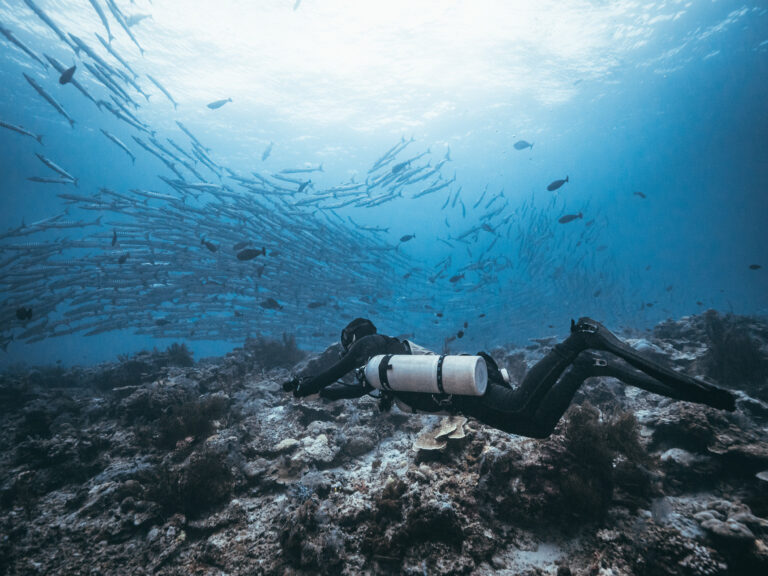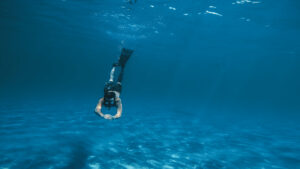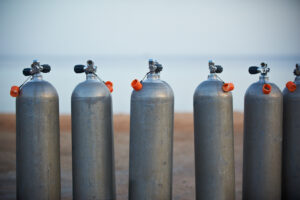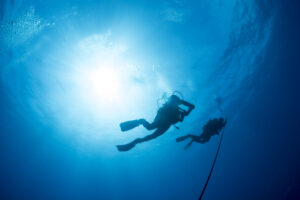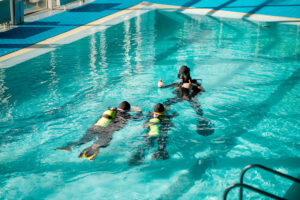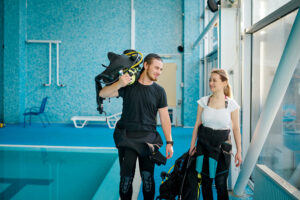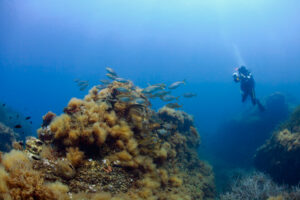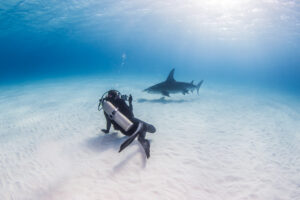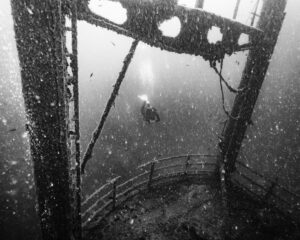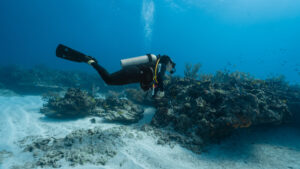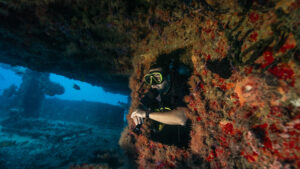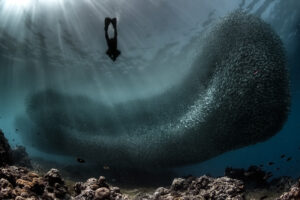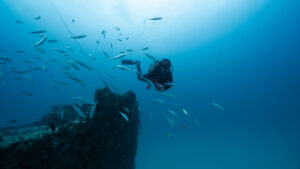What is Carbon Dioxide (CO2)?
Carbon dioxide (CO2) is an odorless, tasteless gas that is a natural byproduct of metabolism. This greenhouse gas plays a crucial role in the Earth’s atmosphere, and it is also an essential factor to consider for scuba divers. Exhaled by the lungs, CO2 is a critical aspect of scuba diving, as it impacts a diver’s respiration, buoyancy, and decompression. This article will explore the implications of carbon dioxide in scuba diving, addressing its physiological effects, equipment considerations, and techniques to manage CO2 levels while diving.
Physiological Effects of CO2 in Scuba Diving
Respiration and Gas Exchange
When a diver breathes in, oxygen is extracted from the air, and carbon dioxide is produced as a waste product. During exhalation, the CO2 is expelled from the body. The efficient exchange of oxygen and CO2 is vital for maintaining proper body function. The partial pressure of CO2 (pCO2) in the body increases with depth due to increased ambient pressure, which can lead to hypercapnia or CO2 retention. Symptoms of hypercapnia include shortness of breath, dizziness, confusion, and, in severe cases, unconsciousness.
Carbon Dioxide Toxicity
CO2 toxicity, also known as hypercapnia, occurs when the concentration of CO2 in the blood is too high. This can happen if a diver is not exhaling completely, experiences an equipment malfunction, or is working too hard underwater. Symptoms include headaches, shortness of breath, confusion, and even unconsciousness. If left untreated, CO2 toxicity can be fatal.
Narcotic Effects
At greater depths, the narcotic effects of CO2 become more pronounced, resulting in a phenomenon called “narcosis.” This can impair a diver’s judgment, coordination, and reaction time, potentially leading to dangerous situations.
Equipment Considerations
Regulators
Scuba regulators should be designed to provide low breathing resistance to minimize the effort required to inhale and exhale, reducing the likelihood of CO2 buildup. Regular maintenance and servicing of regulators are essential to ensure proper function.
Buoyancy Control Devices (BCDs)
BCDs help divers maintain neutral buoyancy and control their depth. Proper use of a BCD can help prevent rapid ascents, which can cause a sudden drop in pCO2, leading to “off-gassing” and decompression sickness.
Rebreathers
Rebreathers recycle exhaled air by removing CO2 and adding oxygen, allowing divers to breathe the same air multiple times. This reduces the amount of CO2 released into the water and extends dive times. However, rebreathers require special training and come with their own set of risks.
Managing CO2 Levels While Diving
Carbon dioxide is a critical aspect of scuba diving that affects a diver’s respiration, buoyancy, and decompression. Understanding the physiological effects of CO2 and its implications for scuba diving is essential for a safe and enjoyable underwater experience. With appropriate equipment, proper breathing techniques, and thorough training, divers can effectively manage CO2 levels and minimize the risk of CO2-related issues.
Controlled Breathing
Proper breathing techniques are critical for managing CO2 levels while diving. Divers should practice slow, deep, and complete exhalations to expel as much CO2 as possible.
Avoid Overexertion
Overexertion can increase the production of CO2, leading to CO2 buildup and potential toxicity. Divers should monitor their workload and pace themselves to minimize the risk of CO2-related issues.
Gradual Ascents
Divers should ascend slowly and perform safety stops to allow sufficient time for off-gassing and prevent decompression sickness.
Adequate Training
Proper scuba diving training, including courses on advanced buoyancy control, rescue diving, and rebreather use, can help divers manage CO2 levels effectively and respond to emergencies.
Buddy System:
Diving with a buddy provides an added layer of safety, as divers can assist each other in monitoring and managing CO2 levels. Buddies can remind each other to maintain proper breathing techniques, watch for signs of CO2 toxicity, and provide assistance in emergencies.
Pre-dive Planning:
Thorough pre-dive planning, including analyzing gas mixtures, calculating bottom times, and accounting for potential CO2-related issues, can help divers prepare for safe dives. Divers should also factor in their individual fitness levels and experience when planning dive profiles to reduce the risk of CO2 buildup.
Fitness and Health:
Maintaining good physical fitness and overall health can improve a diver’s ability to manage CO2 levels. Regular cardiovascular exercise, such as swimming or jogging, can increase lung capacity and efficiency, making it easier to maintain proper gas exchange while diving. Additionally, divers should avoid smoking and excessive alcohol consumption, as these habits can impair lung function and exacerbate CO2-related issues.
Environmental Considerations:
CO2 also plays a significant role in ocean acidification, a process that occurs when excess CO2 is absorbed by seawater, resulting in a decrease in pH. This can have negative effects on marine ecosystems and organisms, such as coral reefs and shellfish. By using rebreathers or diving in shallower waters, divers can help minimize their impact on the environment.
Emergency Procedures:
In the event of CO2 toxicity or other CO2-related issues, divers should be familiar with emergency procedures, such as controlled emergency swimming ascents (CESA), buddy breathing, and surface marker buoy (SMB) deployment. These skills can be lifesaving and should be regularly practiced as part of ongoing diver training.
Key Takeaways
In summary, carbon dioxide is an essential factor to consider in scuba diving, as it can impact a diver’s safety and well-being. By understanding the implications of CO2, selecting appropriate equipment, practicing proper breathing techniques, and maintaining overall fitness, divers can manage CO2 levels effectively and enjoy safe, fulfilling underwater adventures. Regular training and adherence to established safety protocols are key to minimizing the risks associated with carbon dioxide in scuba diving, ensuring a positive experience for divers and minimal impact on the marine environment.

